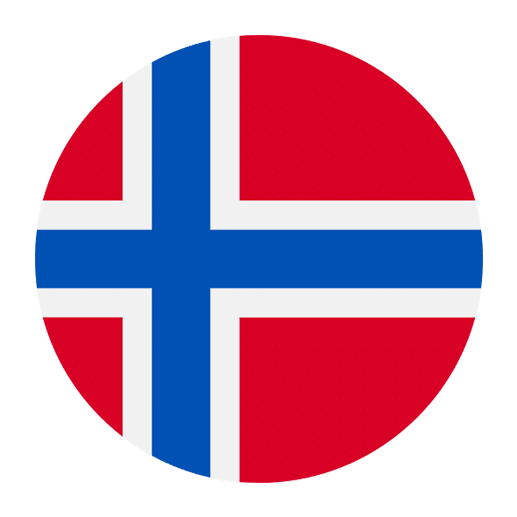The Norwegian language, like many other languages, is experiencing significant changes in the context of an increasingly globalized world. As borders become more porous and digital communication bridges vast distances, languages are affected in multifaceted ways. Norwegian, a North Germanic language spoken primarily in Norway, is not immune to these influences. Understanding the future of the Norwegian language involves examining its current status, the influence of globalization, technological advancements, and cultural shifts. This article will delve into these aspects to paint a comprehensive picture of what lies ahead for Norwegian.
Current Status of the Norwegian Language
Norwegian is one of the official languages of Norway, spoken by approximately 5.3 million people. The language exists in two written forms: Bokmål and Nynorsk. Bokmål is the more widely used of the two, while Nynorsk, though less prevalent, holds significant cultural and political importance. Both forms are taught in schools, and government documents are available in both.
In addition to these written forms, there are numerous dialects spoken across the country. These dialects can vary significantly from one region to another, reflecting Norway’s geographic and historical diversity. Despite these variations, Norwegians generally understand each other well, thanks to a shared education system and media consumption.
Influence of Globalization
English as a Lingua Franca
One of the most significant impacts of globalization on the Norwegian language is the pervasive influence of English. English is taught extensively in Norwegian schools, starting from a young age, and many Norwegians are fluent in English by the time they reach adulthood. This proficiency in English is driven by several factors, including the importance of English in global business, the prevalence of English-language media, and the internet.
While this bilingualism is undoubtedly beneficial in many respects, it also poses challenges. There is a growing concern that the dominance of English could lead to a decline in the use of Norwegian, particularly in professional and academic settings. Some fear that Norwegian may become less relevant in fields such as science and technology, where English is often the primary language of communication.
Cultural Exchange and Media
Globalization has also facilitated a greater exchange of cultural products, such as films, music, and literature. Norwegian consumers have access to a vast array of international media, much of it in English. This exposure can enrich the cultural landscape but also raises questions about the preservation of Norwegian cultural identity.
Norwegian media producers are responding to these challenges by creating content that appeals to both domestic and international audiences. For instance, Norwegian TV series and films, such as “Skam” and “Norsemen,” have gained international acclaim, showcasing Norwegian culture while reaching a global audience. These productions often include English subtitles or even English dialogue, reflecting the dual linguistic reality of modern Norway.
Technological Advancements
Language Learning Apps and Tools
The rise of technology has revolutionized language learning, making it more accessible and interactive. Apps like Duolingo, Babbel, and Memrise offer Norwegian language courses to a global audience. These platforms use gamification and adaptive learning techniques to engage users and improve retention.
For Norwegians, these tools can help reinforce their native language skills, particularly for those living abroad or in regions where Norwegian is less commonly spoken. Additionally, language learning apps provide opportunities for non-Norwegians to learn the language, fostering greater cross-cultural understanding and exchange.
Artificial Intelligence and Machine Translation
Artificial intelligence (AI) and machine translation technologies are also making significant strides. Tools like Google Translate and DeepL have become increasingly accurate, facilitating communication across language barriers. While these technologies are not yet perfect, they are continually improving and becoming more integrated into everyday life.
For the Norwegian language, this means that non-speakers can more easily access Norwegian content and communicate with Norwegians. However, there is a potential downside: the reliance on machine translation could lead to a decreased emphasis on learning the language. If people can rely on technology to bridge linguistic gaps, they may be less motivated to learn Norwegian themselves.
Cultural Shifts and Identity
Immigration and Multiculturalism
Norway has seen an increase in immigration over the past few decades, leading to a more multicultural society. This demographic shift brings new languages and cultural practices into the Norwegian landscape. While this diversity enriches the country, it also presents challenges for the Norwegian language.
Immigrants often bring their native languages with them, and while many learn Norwegian, there is a risk that the language could become less dominant in certain communities. To address this, the Norwegian government has implemented language programs to help immigrants learn Norwegian and integrate into society. These efforts aim to ensure that Norwegian remains a unifying force in an increasingly diverse population.
Youth and Language Evolution
Younger generations play a crucial role in the evolution of any language, and Norwegian is no exception. Norwegian youth are highly exposed to global trends through social media, music, and other forms of digital communication. This exposure often leads to the incorporation of loanwords and slang from other languages, particularly English.
While some purists may view these changes as a threat to the integrity of the Norwegian language, others see them as a natural part of linguistic evolution. Languages are dynamic, and the incorporation of new words and expressions can enrich the language, making it more versatile and expressive.
Efforts to Preserve and Promote Norwegian
Language Policies and Education
The Norwegian government has implemented various policies to preserve and promote the Norwegian language. These include requirements for public broadcasting to use Norwegian, support for Norwegian-language literature and arts, and the promotion of both Bokmål and Nynorsk in education.
Schools play a critical role in this effort. Norwegian children are taught both written forms of the language, and there is an emphasis on the importance of maintaining the language. Additionally, there are initiatives to promote the use of Norwegian in higher education and research, countering the dominance of English in these fields.
Cultural Institutions and Media
Cultural institutions and media organizations also play a vital role in promoting the Norwegian language. The Norwegian Broadcasting Corporation (NRK) produces a wide range of content in Norwegian, from news and documentaries to entertainment and children’s programming. This content helps to ensure that Norwegian remains a vibrant and relevant part of everyday life.
Literary institutions, such as the Norwegian Authors’ Union, support writers and promote Norwegian literature both domestically and internationally. Festivals, such as the Oslo International Literature Festival, celebrate Norwegian language and culture, fostering a sense of pride and community.
The Role of the Norwegian Diaspora
Norwegians living abroad constitute a significant part of the Norwegian-speaking community. The diaspora plays a crucial role in the global presence of the Norwegian language. Many expatriates maintain their native language and pass it on to their children, ensuring that Norwegian remains alive outside of Norway’s borders.
Organizations and communities abroad often create spaces where Norwegian culture and language can thrive. Language schools, cultural associations, and social events help expatriates stay connected to their roots. These efforts not only preserve the language but also promote it to non-Norwegians interested in learning about Norwegian culture.
Digital Communities
The internet has enabled the creation of digital communities where Norwegian speakers can connect, share experiences, and promote their language and culture. Social media platforms, forums, and online groups provide spaces for Norwegians around the world to engage with each other and with those interested in learning the language.
Online platforms also offer resources for language learning, cultural exchange, and networking. Websites, blogs, and YouTube channels dedicated to Norwegian language and culture attract a global audience, fostering greater awareness and appreciation of Norwegian.
The Future Outlook
The future of the Norwegian language in a globalized world is multifaceted and complex. On one hand, globalization presents challenges, such as the dominance of English and the integration of loanwords. On the other hand, it offers opportunities for greater cultural exchange and the promotion of Norwegian on a global stage.
The key to ensuring the vitality of the Norwegian language lies in a balanced approach that embraces the benefits of globalization while actively working to preserve and promote the language. This involves continued investment in language education, support for cultural institutions, and the promotion of Norwegian media and literature.
Moreover, the role of technology cannot be underestimated. While AI and machine translation pose potential risks, they also offer tools that can facilitate language learning and communication. Leveraging these technologies responsibly can help ensure that Norwegian remains accessible and relevant in an increasingly digital world.
Embracing Diversity
As Norway becomes more multicultural, embracing diversity will be crucial for the future of the Norwegian language. This means not only promoting Norwegian among immigrants but also valuing the linguistic and cultural contributions they bring. A multilingual and multicultural society can be a source of strength, enriching the Norwegian language and culture.
Programs that promote language learning and cultural exchange can help build a more inclusive society where Norwegian remains a common thread that unites diverse communities. By fostering a sense of belonging and pride in the language, Norway can ensure that Norwegian continues to thrive in a globalized world.
Conclusion
The future of the Norwegian language in a globalized world is shaped by a myriad of factors, including the influence of English, technological advancements, cultural shifts, and the efforts of both individuals and institutions to preserve and promote the language. While challenges exist, there are also numerous opportunities to ensure that Norwegian remains a vibrant and relevant part of the global linguistic landscape.
By embracing a balanced approach that leverages the benefits of globalization while actively working to preserve the language, Norway can navigate these changes successfully. This involves continued investment in education, support for cultural institutions, and the promotion of Norwegian media and literature. Additionally, embracing diversity and fostering a sense of pride and belonging in the language will be crucial for its future vitality.
Ultimately, the future of the Norwegian language will be shaped by the collective efforts of all those who speak, learn, and promote it. By working together, Norwegians and language enthusiasts around the world can ensure that Norwegian remains a thriving and dynamic language in the globalized world of tomorrow.

